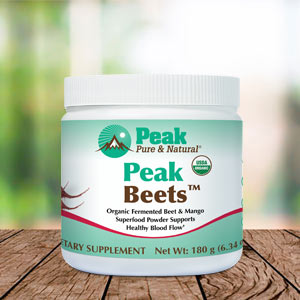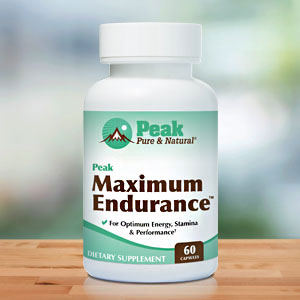Get Easy Health Digest™ in your inbox and don’t miss a thing when you subscribe today. Plus, get the free bonus report, Mother Nature’s Tips, Tricks and Remedies for Cholesterol, Blood Pressure & Blood Sugar as my way of saying welcome to the community!
Flexibility may be the easiest flex for a longer life

At 68, I pride myself on the fact that I can still bend over and touch my toes in the morning. The younger folks on social media call that a “flex,” but my generation would call it bragging.
This flexibility makes me feel younger. But now I’m finding out that it may help me live to the ripe old age of 100 that my mother reached.
That’s my goal. If you, too, are concerned about living longer, read on.
There’s some encouraging research showing that staying flexible, rather than just strong, could the best flex for a long life…
Flexibility correlates with a longer life
An international research team from the United States, Europe, and Canada analyzed data on 3,139 people between the ages of 46 to 65.
By scoring them on passive range of motion involving different joints, they obtained a body flexibility score which they call a Flexindex. Scores can range from zero to 80.
Over a follow-up period of almost 13 years, 302 of these people died — and results showed that those who survived had a higher Flexindex score than those who passed away.
In fact, Flexindex scores were nearly ten percent higher for survivors than for those who died over the course of the study. This was true of both men and women.
After taking age, body mass index and health status into account, men and women with a low Flexindex had a 1.87- and 4.78-times higher risk of dying, respectively, than those with a high Flexindex. For women that’s almost 5 percent!
Stretching increases flexibility and longevity
What is it about stretching that could have such a powerful effect?
For one thing, stretching has already been linked to reduced arterial stiffness and lower blood pressure, key contributors to healthy aging.
Even “passive stretching,” which is when another person such as a workout partner or physical therapist assists you in stretching, was shown to improve blood flow and blood vessel dilation.
Stretching also makes you more flexible and improves range of motion. These qualities can help you keep moving and may also improve balance to prevent falls that can happen with age.
Makes me wonder if the link between stretching and longevity has to do with the flexibility you gain from making stretching a regular part of your exercise routine.
Fighting a major ‘scourge of aging’
One of the biggest threats to longevity is sarcopenia, the loss of muscle mass due to the natural aging process.
Most people begin losing muscle tissue around age 40. With this loss comes a gradual reduction in muscle strength and function. By age 50, as our body becomes less able to convert protein into muscle, we are losing one percent to two percent of our muscle mass every year.
In our 60s and 70s, this loss becomes even more rapid. We lose muscle fibers, and the ones we have are shrinking. It also increases the risk of other life-threatening conditions like diabetes, osteoporosis, dementia and heart disease.
I don’t know about you, but this is enough to kick all my “I can’t exercise” excuses to the curb.
How to get started
“Sounds great – but I need some direction.”
No problem! Numerous free videos are easy to access online that anyone can incorporate into the busiest of days. If you are new to stretching, look for beginner-level videos.
How much time should you invest in daily stretches?
Previous research found that just 30 minutes of stretching a day was enough for participants to see big changes in blood pressure across three types of measurement.
And if you’re ready to make a bigger commitment to learning a new technique, head for the nearest yoga studio and take some beginners’ classes. Yoga is easy on most bodies (especially the joints) and has been tied to a host of improvements in physical and mental well-being.
Editor’s note: There are perfectly safe and natural ways to decrease your risk of blood clots including the 25-cent vitamin, the nutrient that acts as a natural blood thinner and the powerful herb that helps clear plaque. To discover these and other secrets of long-lived hearts, click here for Hushed Up Natural Heart Cures and Common Misconceptions of Popular Heart Treatments!
Sources:
Can flexibility help people live longer? — Eureka Alert
Reduced body flexibility is associated with poor survival in middle aged men and women a prospective cohort study — Scandinavian Journal of Medicine and Science in Sports














